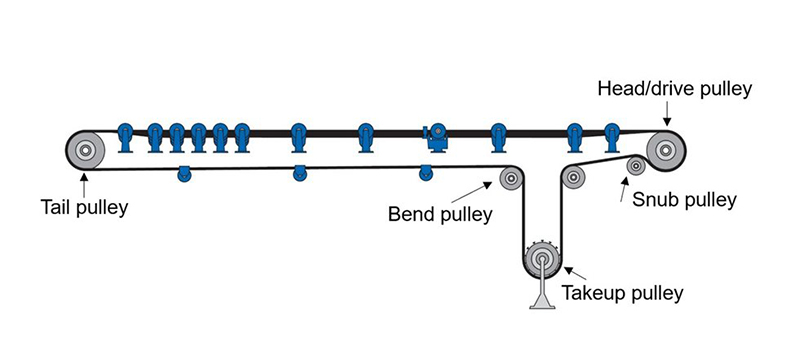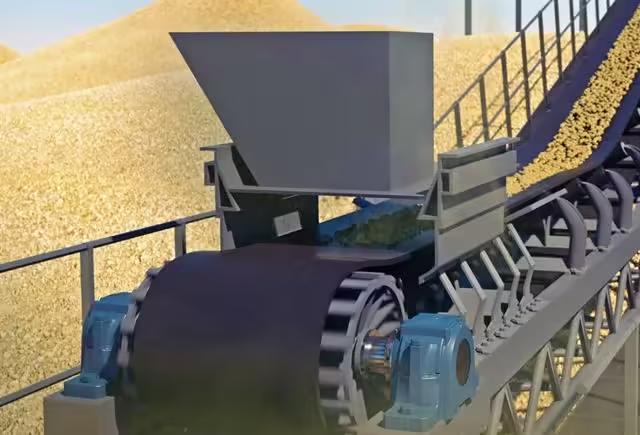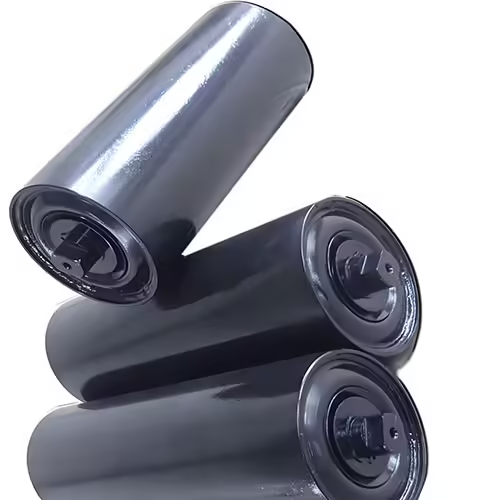Table of Contents
Introduction

In conveyor systems, tail drums play a critical role in maintaining system efficiency and ensuring smooth operation. Whether you work in mining, logistics, or port transportation, understanding how to select the right tail drum significantly impacts your conveyor system’s performance and lifespan. Cangzhou Terok specializes in manufacturing and supplying high-quality conveyor components designed to meet the demanding requirements of diverse industries. In this blog, we will discuss the key factors to consider when selecting the right tail pulley for your conveyor system and how the correct choice can enhance performance, reduce maintenance, and optimize cost-effectiveness.
Why Choosing the Right Tail Pulley Is Crucial for Conveyor Systems

Conveyor systems are the backbone of many industries, and tail rollers are one of the most critical components in ensuring these systems operate smoothly. Located at the end of the conveyor belt, the tail pulley plays a vital role in belt tensioning, belt alignment, and load distribution. If not selected properly, it can lead to inefficiencies, increased wear, and potential system failure.
Choosing the correct tail pulley helps in maintaining optimal tension, reducing energy consumption, and extending the life of the conveyor system. When done right, it improves system reliability and lowers overall maintenance costs. Below, we’ll explore the most important factors to consider when selecting a tail roller for your conveyor system.
Key Considerations for Choosing the Right Tail Pulley
1. Load Capacity and Belt Type
The load capacity of your conveyor system should match the specifications of your tail pulley. Whether your conveyor system is transporting lightweight materials or heavy-duty loads, the tail pulley must be able to handle the weight without compromising its performance. Additionally, the type of conveyor belt—whether it’s a standard, heavy-duty, or high-speed belt—also determines the kind of tail roller required.
2. Material and Durability
The material of the tail pulley affects its durability, especially in harsh environments like mining. Common materials used for tail pulleys include steel, stainless steel, and corrosion-resistant alloys. For heavy-duty applications, such as mining or port operations, choosing a tail roller made from high-strength materials is essential for withstanding wear, corrosion, and exposure to extreme temperatures.
3. Environmental Conditions
Environmental factors such as dust, moisture, and temperature can affect the performance of tail rollers. It’s crucial to assess the conditions in which your conveyor system will operate. In wet or corrosive environments, a sealed or corrosion-resistant tail roller will help protect against premature failure.
4. Bearing Type and Lubrication
The type of bearing used in the tail pulley is another important consideration. Bearings determine how smoothly the pulley rotates and how much load it can handle. It’s essential to choose the correct bearing type based on your conveyor’s load and speed requirements. Furthermore, proper lubrication is vital for reducing friction and extending the lifespan of the bearing.
Table: Key Factors for Selecting a Tail Pulley
| Factor | Considerations | Impact on System |
|---|---|---|
| Load Capacity | Ensure the tail pulley matches the weight of materials. | Prevents overloads, reduces wear, and optimizes performance. |
| Material | Steel, stainless steel, or corrosion-resistant alloys. | Increases durability and resistance to wear and harsh conditions. |
| Environmental Conditions | Exposure to dust, moisture, and extreme temperatures. | Enhances longevity and performance in challenging environments. |
| Bearing Type | Roller bearings, sealed bearings, or ceramic bearings. | Determines rotational smoothness, load-bearing capacity, and maintenance needs. |
| Lubrication | Sealed bearings or proper grease application. | Reduces friction, prevents overheating, and extends bearing life. |
How Tail Pulleys Contribute to Conveyor Efficiency


A tail pulley is crucial for maintaining the proper tension in the conveyor belt. This tension ensures that the belt stays properly aligned, reducing the chances of slippage or misalignment that could lead to costly repairs. By evenly distributing the load, a well-chosen tail roller minimizes stress on other conveyor components, ensuring the system runs efficiently.
Additionally, tail pulleys help reduce friction between the conveyor belt and the pulley, which can significantly lower energy consumption. When friction is reduced, the conveyor system requires less power to operate, ultimately leading to reduced operational costs.
Conclusion
In summary, selecting the right tail pulley for your conveyor system is a critical decision that impacts system performance, efficiency, and service life. By considering factors such as load capacity, material, environmental conditions, bearing type, and lubrication, you can ensure your conveyor system operates at peak performance while minimizing downtime and maintenance costs.
Cangzhou Terok specializes in providing high-quality tail rollers tailored to the unique demands of industries such as mining, logistics, and port transportation. Whether you require rollers for heavy-duty applications or specialized environments, we offer customized solutions to meet your specific needs. If you’re ready to optimize your conveyor system, contact us today to learn more about our tail rollers and how they can benefit your operations.
FAQ
What is the main function of a tail pulley in a conveyor system?
The primary function of a tail roller is to maintain belt tension, ensure proper alignment, and distribute the load evenly across the conveyor system.
How do I know if I’m choosing the right tail roller for my system?
Consider factors such as load capacity, environmental conditions, and the type of conveyor belt. Consulting with experts or manufacturers can also help you make the right choice.
Can the wrong tail pulley cause system failure?
Yes, choosing the wrong tail roller can lead to misalignment, excessive wear, and even system failure, causing costly downtime and repairs.
How often should tail rollers be maintained?
Regular inspections should be done to check for wear, alignment, and lubrication. In harsh environments, more frequent maintenance may be necessary to ensure optimal performance.




